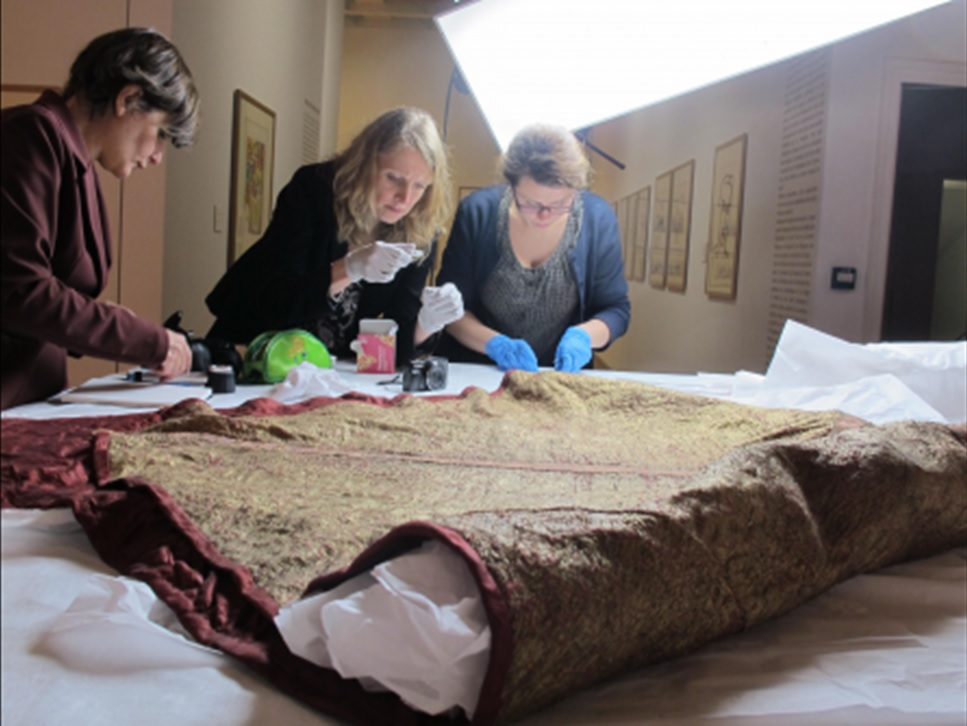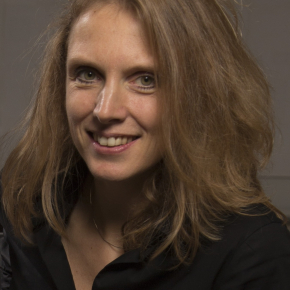Art and analytical chemistry – the two facets of Caroline Tokarski
Caroline Tokarski is a high-resolution mass spectrometry specialist who identifies proteins, lipids and sugars in works of art as well as in archaeological remains. This expertise and passion for her subject has taken her to many museums around the world to unlock the secrets of masterpieces and discover threats to their long-term conservation.
A sample of what looks like a few grains and some dust is not immediately impressive. However Caroline Tokarski is working on a sample taken from a precious painting by Modigliani. After more than ten years at the Miniaturisation for Synthesis, Analysis and Proteomics laboratory (MSAP, CNRS/University of Lille), this university professor is now using her expertise in analytical chemistry for the benefit of cultural heritage from her brand new Bordeaux office. She now works at the Institute of Membrane and Nanoobject Chemistry and Biology (CBMN, CNRS/University of Bordeaux/Bordeaux INP),
the Institute of Chemistry and Biology of Membranes and Nano-objects (CBMN, CNRS/University of Bordeaux/Bordeaux Polytechnic Institute) and specializes in the identification of proteins, lipids and sugars by high resolution mass spectrometry. These complex molecular structures are ionized and identified according to their mass-to-charge ratio and characteristic parent/fragment ions.
Caroline Tokarski does not just use this cutting-edge technique, she constantly optimizes it. Her work on the original preparation and analysis of samples won her a prize from the French Chemical Society in 2011. Her objective is to improve the information obtained from organic compounds while reducing the size of the samples taken. Paintings, archaeological remains or even ancient bones are all precious objects from which samples must be kept to a minimum.
"Until very recently," explains Caroline Tokarski, "the reference method for analysis consisted of cutting proteins into constituent pieces – the amino acids. This technique can be used to identify organic binders but it also causes the loss of important information namely the chain or sequence of these amino acids. So my team and I suggested a study of proteins on the basis of larger fragments, peptides, to enable them to be more precisely identified along with their chemical modifications and biological origins." Her approach is a great deal more sensitive and has since been adopted by many museums and laboratories around the world.
Caroline Tokarski is regularly approached by the world's main art institutions. She often works for the Metropolitan Museum of Art in New York and the Rijksmuseum in Amsterdam and is currently working on an upcoming Modigliani exhibition at the Lille Métropole Museum of Modern, Contemporary and Outsider Art (LaM). She shares her know-how with dozens of museums.
"The great masters very rarely revealed their techniques," she explains, "but mass spectrometry makes it possible to find out their methods and secrets. Apart from the scientific knowledge generated concerning a work and its author, the molecular signature decoded in this way makes it possible to tell an original work from a forgery." The choice of a different paint or varnish or unusual molecular ageing could quickly betray a forgery.

Her work also involves monitoring how paintings are preserved and how they age. "Even in a museum, a work continues to evolve," says Caroline Tokarski. "Molecules continually react and their chemical modifications integrate the consequences of any restoration work and exposure or conservation conditions. This kind of treatment and external factors must be studied and adapted to preserve the artist's work as close as possible to its original condition."
The study of proteins is also used in archaeology as well as paintings and art samples. For example, it can be used to identify the content of an amphora or to characterize the specific proteins of certain living species. Here again, Caroline Tokarski's techniques only require miniscule quantities of samples namely a few dozen micrograms of protein whereas DNA analysis would require 10,000 times more matter.
"Getting as much information as possible from a minimum sample of organic material trapped in a complex matrix and modified or even distorted by time makes heritage studies an exciting analytical challenge," she enthuses. Caroline Tokarski systematically visits museums to meet curators and restorers to guide and help them with taking samples. Then a meticulous sample preparation process begins in which failure and any requests for new samples are impossible.
Since her thesis in analytical chemistry which focused more on health-related applications, Caroline Tokarski has continually managed to combine her two passions in life. "Art and analysis fascinate me, I try to use my expertise in analytical chemistry to serve art. When I come into contact with paintings by great masters, I realize how lucky I am to work in such exceptional "frames."
2 Lille Métropole Musée d’art moderne, d’art contemporain et d’art brut.
